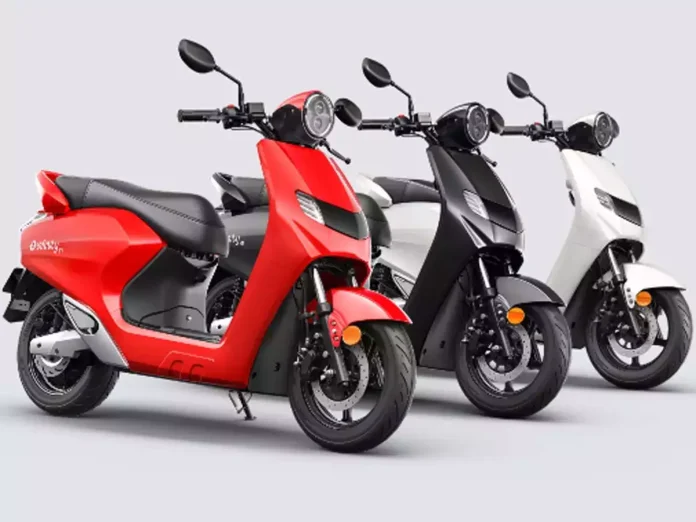The value migration from two-wheelers (2W) with internal combustion engines (ICE) to two-wheelers that run on electricity has been obvious over the last year. The electric vehicle (EV) industry sold 231,338 EVs in FY22, as opposed to 41,046 EVs in FY21. The trend toward the adoption of electric vehicles had accelerated after Covid-19 pandemic and continues to receive impetus due to high fossil fuel prices. While sales of ICE two-wheelers are lacklustre, EV sales have grown in leaps and bounds.
By Business Briefs
Over the last two years, one would have noticed showrooms of hitherto unknown 2W companies come up in their neighbourhood. The growth potential in EVs along with better-than-expected adoption among the masses has started a gold rush in the sector. The differentiation between high-speed and low-speed EVs has allowed several players to set up shop in the low-speed EV space, which has less regulations.
In a recent conference call with investors, the promoter of a public auto parts company highlighted that there are around 42 players in the EV space that the company supplies to. If one includes smaller players catering to the low-speed EV space as well, it is clear that the sector has a large number of players vying for the same market segments.
In addition, companies that have little to no experience in the two-wheeler industry have jumped in to manufacture their own two-wheelers.
At its core, the rush in the sector is just capitalism at work. All players in the game are looking to earn a return on capital higher than the cost of capital, but as more players join the race, it becomes unlikely that any of them would do so. The traditional Indian two-wheeler space is dominated by around five original equipment manufacturers (OEMs) that cater to around 80 per cent of the market. The EV two-wheeler space has more than 50 players vying for control of the market, of which the top five cater to around 74 per cent of the market.
Hence, the remaining players might find it difficult to justify large investments into production, marketing, etc. Further, in case the customers perceive the quality of products to be equal, lowering prices might be the only way to get rid of inventory. According to several industry sources, it is unlikely that upwards of 50 players can do well simultaneously.
Further, EV players are struggling with profitability, and are dependent on investor funding to continue operations currently. Despite rapidly increasing sales, these companies have been unable to turn a sustainable profit yet. In case capital becomes scarce, as several private market veterans expect it to, EV players are in for a funding winter making consolidation inevitable.
The low quality of EVs being produced has become a concern, with fires being reported in several parts of the country. Several prominent figures from the auto industry have attributed the fires to low-quality parts being used, loose regulations, and a large number of inexperienced players entering the two-wheeler mobility space.
Most EV players usually import a large percentage of the vehicle parts from China, assemble them in workshops and sell the product under a brand name. Quality concerns might dissuade customers from buying EVs from smaller players, and steer them towards sticking to well-known and prominent players. Further, changes in safety regulations, or any eligibility criteria, could spell danger for new manufacturers.
The scale of manufacturing has been a significant component of success in the automotive industry, and the production of a quality product at scale has been mastered by traditional OEMs. As highlighted earlier, small players might not have access to capital in order to create a certain manufacturing scale, or the investments could be unjustifiable relative to their sales volumes. Traditional 2W manufacturers could have an advantage with extensive entrenched distributor networks, a legacy cash-cow business, and the ability to manufacture products at scale.
With the reasons highlighted above, it appears that the Indian two-wheeler EV industry is set for a phase of consolidation, where smaller players either go out of business or are acquired by larger companies. Investors in the private equity markets are already looking toward a period of fund scarcity over the next few years, which could make life tougher for new EV makers. Though the inflow of new players into 2W and 3W EV manufacturing is continuing, it is likely to slow down as the industry begins to reset cost and capital structures.
Consolidation in the industry would have some negative effects such as lower competition, lower choices for consumers, initial job losses, lower returns for lenders and investors, etc. But, on the flip side, the post-consolidation phase would mean safer products, profitable companies, increased ability to innovate, stable jobs, etc.
Ultimately, the capital cycle will return the industry from earning subpar returns on capital to earning at par or superior returns on capital. While a shake-out is inevitable, one can only speculate about when it would begin.
This article first appeared in www.swarajyamag.com and it belongs to them.








